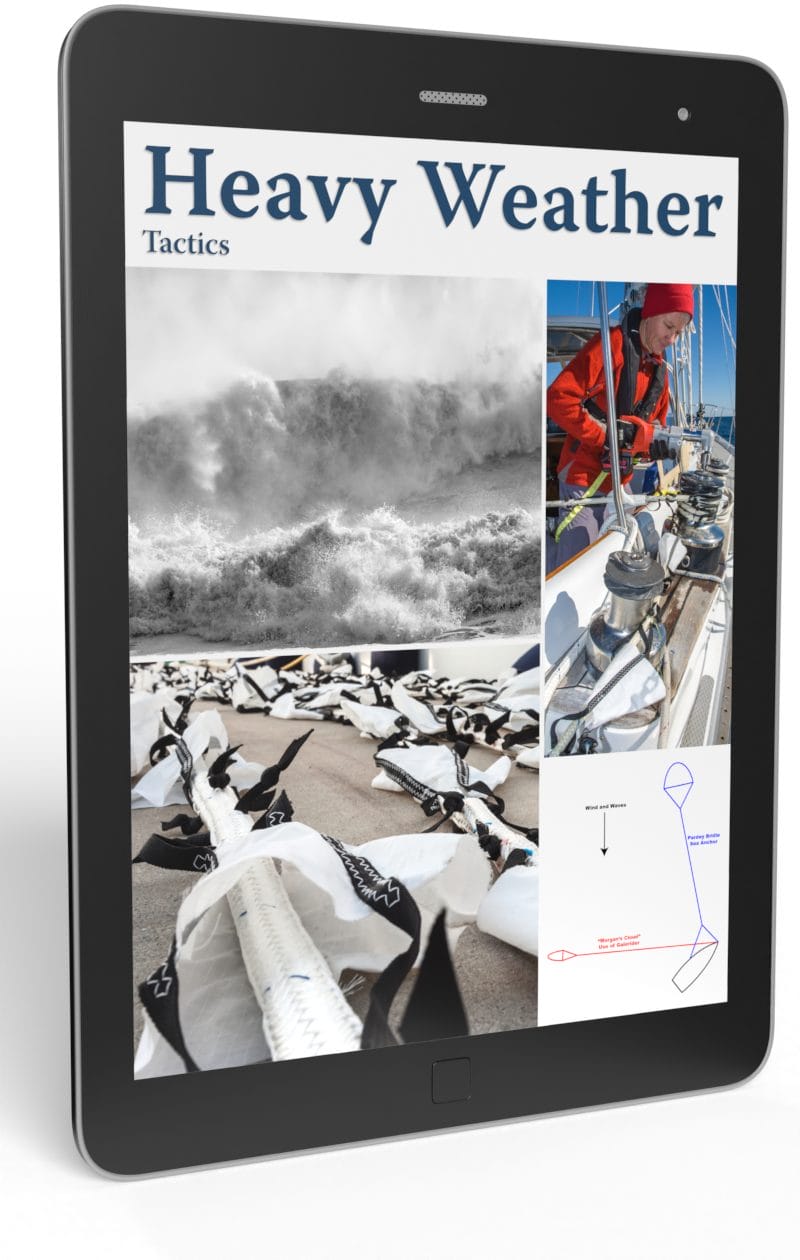
Goals
Before discussing the actual nuts and bolts of gale and storm survival gear and strategy, I’m going to write a bit about the goals that Phyllis and I keep in mind when we are putting together gear and thinking about strategy for dealing with heavy weather at sea.
#1 Keep the Keel Side Down
If you read accounts of sailboat losses at sea due to heavy weather, the series of events that eventually leads to abandonment almost invariably starts with a knockdown, rollover or pitchpoling.
It’s also amazing how often the survivors say that everything seemed to be going fine until suddenly and without warning the mast was underwater. So the most important attribute of the systems we use and will recommend in this book is that they reduce the chances of being rolled.
#2 No Requirement to Steer
A boat steered by a good helmsperson can survive amazingly violent conditions with little gear or forethought other than strong storm sails.
However, I’m no Bernard Moitessier1. For me, the Zen of steering lasts about an hour on a good day. Add some breaking waves, howling winds, and cold temperatures and my Zen time goes to less than five minutes.
Phyllis came to sailing as an adult and, although a surprisingly good helmsperson, she must concentrate and work harder when steering than someone who has sailed from childhood.
Realistically, I don’t believe that the two of us could steer Morgan’s Cloud for more than 6 to 8 hours in a gale (and less in a storm) without exhausting ourselves and eventually making a bad mistake and I’m confident in saying that limitation applies to most all cruisers.
#3 No Requirement for Automated Steering
Although we have a massive autopilot that can and does steer well in near-gale and even gale force conditions when running off, we are not willing to risk an ambush from Mr. Murphy by relying on it in these conditions.
Therefore, our heavy weather survival systems and the ones we recommend do not require steering.
#4 No Sail Changes and No Moving Heavy Gear Around
I’ve paid my dues wrestling to hank on a storm jib on a pitching wave-swept foredeck or standing on a winch and threading the slides of a storm trysail into a track gate above a furled mainsail as the wildly thrashing bunt of the sail tries to take my head off. Been there, done that, and don’t need to play that game anymore.
In addition, my 62 year old back does not take kindly to dragging sodden bags of rope or sea anchors around, which, particularly when wet, have all the maneuverability of a dead body. Such sweaty exertion also tends to make me puke, not to speak of the fact that it is dangerous.
So we have put a lot of time and work into making sure that our storm survival gear can be easily deployed and that the right sails can be set for all conditions by a late middle aged couple with the minimum of effort.
#5 Relatively Comfortable
Heavy weather at sea is nasty enough without employing survival techniques that, while perhaps theoretically safe, result in unnecessarily violent motion.
In fact, using a technique that will result in violent motion is intrinsically dangerous because said motion may injure the crew.
Even if that does not happen, violent motion is exhausting and a tired crew will make mistakes. So we focus on systems that ameliorate the motion as much as possible.
- Moitessier survived truly horrendous conditions in the Southern Ocean by hand steering for many hours and even days. Anyone who goes to sea or is thinking of it should read his book The Long Way, a classic of ocean sailing. ↩︎
